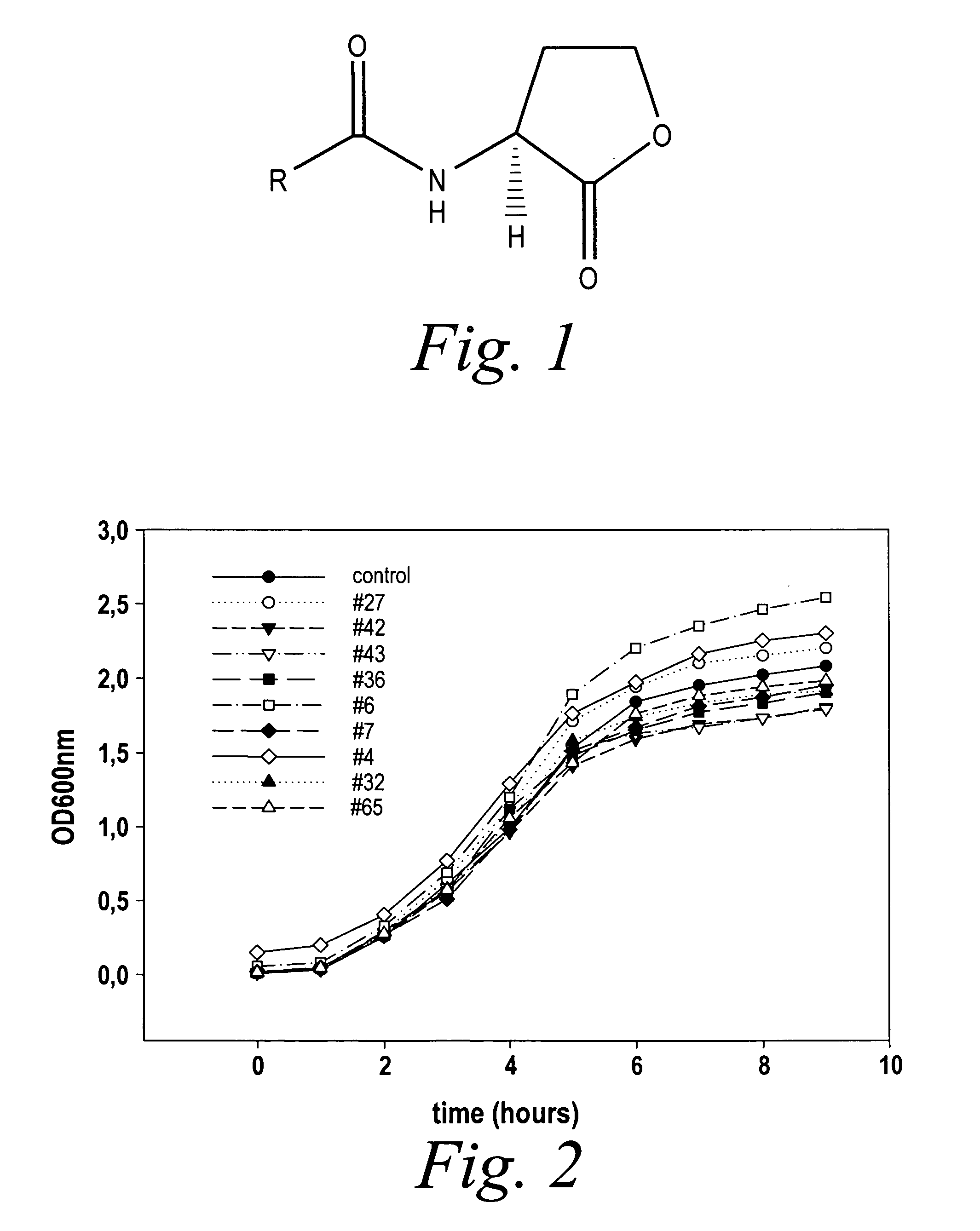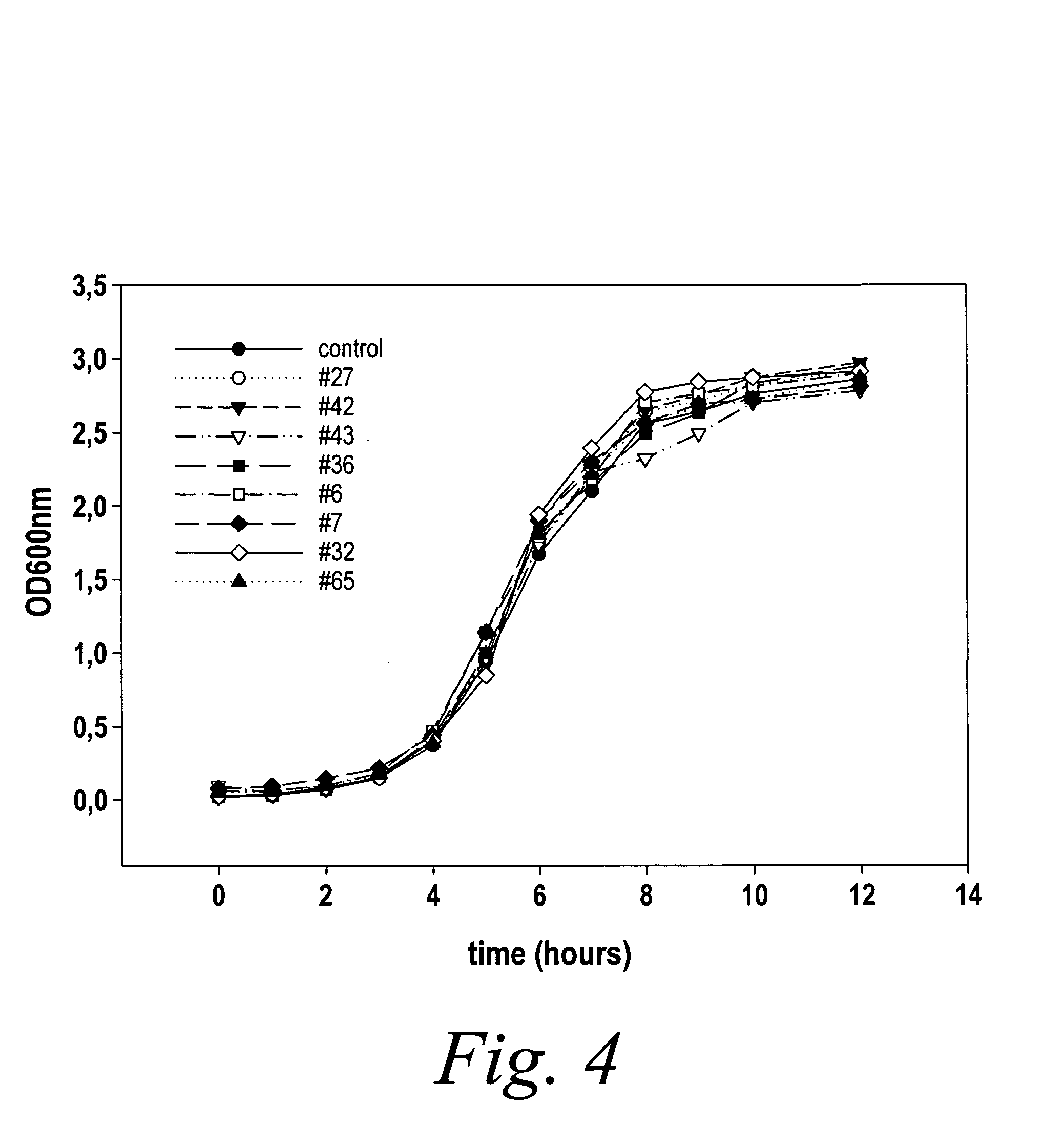Modulation of pathogenicity
a pathogenicity and module technology, applied in the field of module of pathogenicity, can solve the problems of inability to identify rational drug design targets, severe damage or diseases of algae in different areas, and huge costs in public health systems worldwide, and achieve the effects of significantly reducing swarming motility, biofilm formation, and modulating bacterial cell-cell communication
- Summary
- Abstract
- Description
- Claims
- Application Information
AI Technical Summary
Benefits of technology
Problems solved by technology
Method used
Image
Examples
examples
1. Synthesis of Compounds of Formula (XIII), (I), (X), or (XII)
Synthesis Method A (1,2diacylhydrazine or 1-acyl-2sulfonylhydrazine Derivatives)
[0319]A solution of (1.2 eq) acid chloride or (1.2 eq) sulfonyl chloride in tetrahydrofuran was added to a solution of (1 eq) hydrazide in tetrahydrofuran and molecular sieve (0.4 nm) at 0° C. The mixture was stirred at room temperature. After 1 h the reaction mixture was concentrated in vacuum, and the resulting solid was purified by preparative thin layer chromatography (Merck, 20×20 cm, Silica gel 60 F254, 1 mm) (CH2Cl2:MeOH, 100:1).
Synthesis Method B (1,2-diacylhydrazine or 1-acyl-2-sulfonylhydrazine Derivatives)
[0320]A solution of (1.2 eq) acid chloride or (1.2 eq) sulfonyl chloride in dimethylformamide was added to a solution of (1 eq) hydrazide in dimethylformamide and (1.2 eq) triethylamine at 0° C. The mixture was stirred at room temperature. After 1 h the reaction mixture was concentrated in vacuum, and the resulting solid was purif...
PUM
| Property | Measurement | Unit |
|---|---|---|
| temperature | aaaaa | aaaaa |
| temperature | aaaaa | aaaaa |
| osmotic pressure | aaaaa | aaaaa |
Abstract
Description
Claims
Application Information
 Login to View More
Login to View More - R&D
- Intellectual Property
- Life Sciences
- Materials
- Tech Scout
- Unparalleled Data Quality
- Higher Quality Content
- 60% Fewer Hallucinations
Browse by: Latest US Patents, China's latest patents, Technical Efficacy Thesaurus, Application Domain, Technology Topic, Popular Technical Reports.
© 2025 PatSnap. All rights reserved.Legal|Privacy policy|Modern Slavery Act Transparency Statement|Sitemap|About US| Contact US: help@patsnap.com



